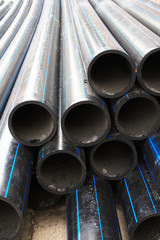Impact of covid-19 on Cured-in-place Pipe (CIPP) Market
Cured-in-place pipe (CIPP) is one of the trenchless (or no-dig) pipeline rehabilitation techniques. It is a non-invasive, jointless, seamless pipe-within-a-pipe that is used for sewer, industrial gas, potable water, and gravity pipe rehabilitation. It can be done inside a pipe with a diameter ranging from 6” to 120” in diameter. Traffic, job productivity, and individuals at home are all affected minimally by this trenchless pipe rehabilitation technology. Municipalities or utilities install it by gaining access to piping systems through city manholes. Manufacturing of CIPP liners must adhere to a number of requirements set forth by ASTM, as well as emission limits set out by other regulatory agencies such as OSHA.
Insituform Technologies, Inc. developed the CIPP technique in 1971, with the first project taking place in London, United Kingdom. Since then, the market's global penetration has continued to grow at an exponential rate. The CIPP technique is already widely used in developed economies, particularly the United States, Germany, and Japan. CIPP technology penetration is currently restricted in developing economies such as China and India; however, this study shows that acceptance is rapidly expanding in these markets as a result of aging pipelines and increased infrastructure rehabilitation spending.
The weakening economy may have a short-term impact on municipal and government investment in infrastructure projects, causing market demand to be delayed. However, the long-term outlook appears bright, with plenty of room for expansion. Major growth drivers of the global Cured-in-place Pipe (CIPP) Market include aging potable and sewage water structures increased spending by municipalities and utilities on rehabilitation, increased awareness about the benefits of trenchless systems, and the superior performance of CIPP over competing technologies.
Regional Insights
North America is expected to continue to be the leading market for CIPP during the forecast period. The United States is CIPP's largest market in both North America and the world. The majority of pipeline construction in the region occurred after WWII and requires rehabilitation, with CIPP being the most appropriate approach for pipe rehabilitation.
Asia-Pacific is likely to be the fastest-growing region. The region currently has a low penetration of trenchless technology, but it is rapidly gaining momentum.
Key Players
Raw material suppliers, tube manufacturers, CIPP liner manufacturers, installation contractors, municipalities, and utility owners are all part of this market's supply chain.
The key players in the Cured-in-place Pipe (CIPP) Market are-
- Per Aarsleff A/S
- Ashmore Industry Co. Ltd.
- iMPREG GmbH
- Insituform Technologies, Inc. (Part of Aegion Corporation)
- IPR (Inland Pipe Rehabilitation)
- Layne Inliner, LLC
- Perma-Liner Industries, LLC
- RELINEEUROPE AG
- SAERTEX multiCom® GmbH
- SAK Construction, LLC
- Sekisui SPR Americas, LLC.
The primary strategies followed by the key companies to get a competitive edge in the market include developing thinner, stronger, and eco-friendly liners, executing mergers and acquisitions and forming contracts with installers and utilities.





Comments
Post a Comment